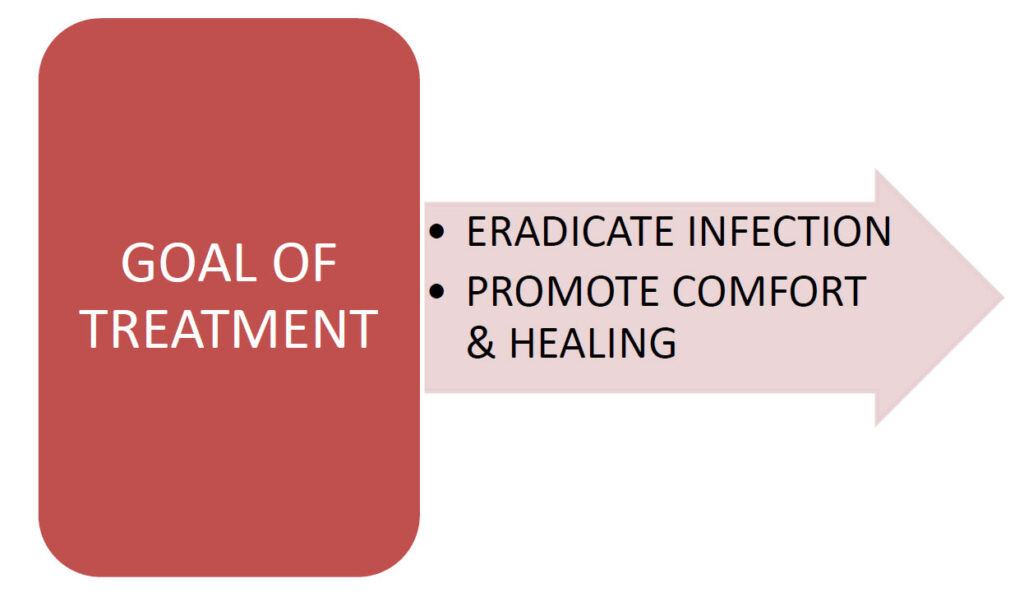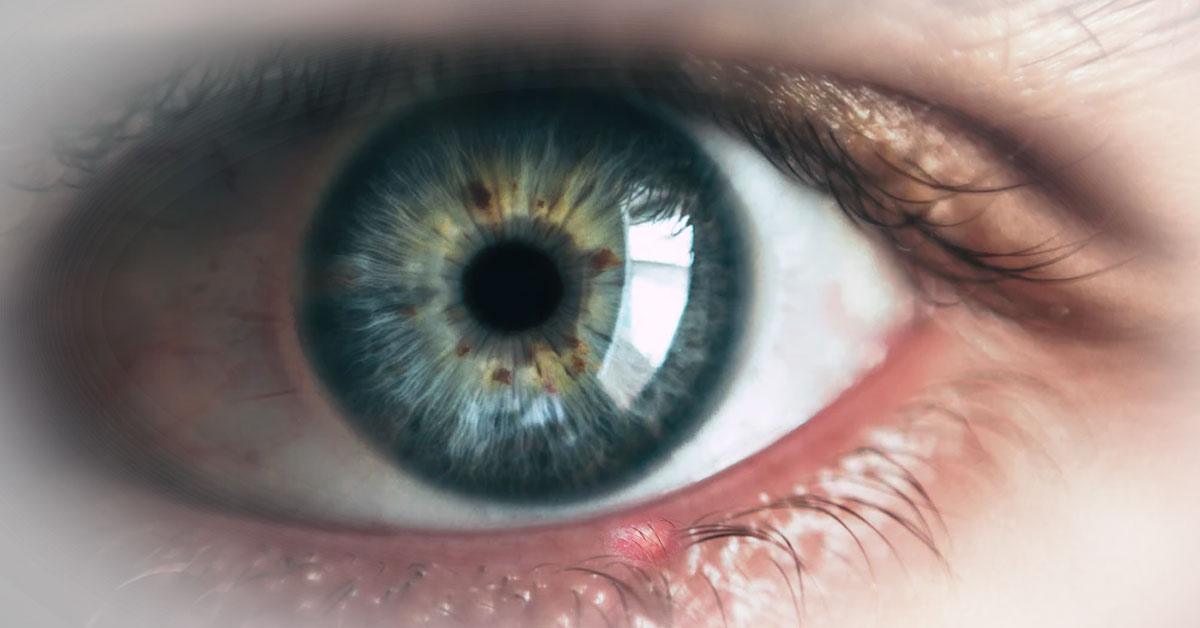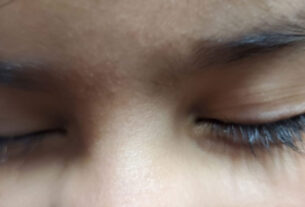Hordeolum or stye is an infection of glands of eyelids. Eye stye or hordeolum is a bump near our eyelids that resembles a painful pimple. The root cause for the stye formation is the Staphylococcus bacterium which resides on our skin without causing any harm.
The external anatomy of the eye can be easily assessed which makes it a unique organ. The effects of many systemic problems such as infections can be detected in an internal eye examination. The upper and lower eyelids of our eyes are like a movable curtain that protects our eyes from dust, foreign bodies, and bright light.
The eyelid is a loose, thin, and easily distensible structure consisting of many superficial and deep glands. Dead skin cells and staphylococcus bacteria sometimes get trapped in these glands which leads to an infection, thus giving rise to a stye.
Incidence rates
While hordeolum is very common, the exact incidence is unknown. People of all ages are prone to be affected with a stye including children although there is a slight increase in incidence in clients with ages 30 to 50. A Stye is a prevalent disorder of the eye which occurs among populations worldwide.
Types of styes
There are commonly two types of styes

If infection occurs in the external glands, ie, they are more superficial, and hence, it is called an external stye. However, if the infection occurs in the interior gland, ie, much more inside the eyelids and hence, it is called an internal stye.

What are the causes for the development of a stye?
- bacterial infection
- majority of patients develop stye as a result of Staphylococcus aureus infection and the next common cause for hordeolum is Staphylococcus epidermidis.
A stye is a bacterial infection, children too are at risk of developing it.
What risk factors lead to the development of an eye stye?
You are at high risk of developing a stye if
- You touch your eyes without proper hand hygiene.
- Rub your eyes when dust particles or foreign body enters eyes without washing
hands properly - You use low quality cosmetic products such as eyeliners, mascara, kajal, etc.
- You don’t remove your make up during the night
- You use contact lens without proper care and hygiene
- You have blepharitis (a chronic eyelid inflammation occurring along the edge of
eyes) - You are suffering from a skin condition characterized by facial redness (rosacea)
- You have a chronic disease condition like seborrhoeic dermatitis (a common skin condition that causes redness, scaly patches, and dandruff), diabetes, and high serum lipid levels.
Do you know the risk factors for the development of stye among children?
A stye is a bacterial infection, children are at risk of developing it due to
- Exposure to dust and foreign particles and rubbing of eyes following it, which can lead to infection later on
- History of stye infection
- seborrhoeic dermatitis
- juvenile diabetes mellitus
What are the various clinical manifestations associated with stye disorder?
A stye can occur in any of the eyes and in some cases both the eyes. The following are the chief complaints of a client suffering from an eye stye:
- Pain in the eyes worsened by eyelid movements
- Redness of the eye
- Excess tearing
- Sensitivity to light
- Eyelid swelling with or without yellowish discharge
- A feeling of some particles or something inside the eyes
- Burning sensation on the affected eyes with tender swelling on the eyelid
- Mild redness over the eye margins of the affected eye
- A papule or a crust formed at the margin of the eyelid
Does an eye stye spread from one person to another?
An eye stye as such is not a communicable disease but can spread through sharing the same towel, handkerchief, pillow, eyeliners etc used by a client with a stye. Proper hand hygiene and avoiding contact with pus and other eye secretions of a patient with stye can prevent its
occurrence to others as well as to the unaffected eyes of the patient itself.
How to diagnose a stye?
A stye can be diagnosed by a physician by just looking at your eyelid. A thorough history collection including ophthalmic history is been collected by the physician or eye specialist which includes:
- Demographic data
- Exploration of current chief complaints
- Past health history
- Family health history
- Psychological history and lifestyle
The external eye is examined by the eye specialist which includes an in-detail examination of eyelids where pain persists for the client. Inspection and palpation of the eyelid are carried out while the client sits at eye level. The eyebrows are elevated to inspect the upper lids for
any lesions. Lower lids are inspected by asking the client to open the eyes.
What are the treatment options to treat a stye in your eye?
Most of the time styes in the eye get healed on their own within several days. Most people recover within a week (7-10 days). The client with stye need not get much worried as they notice a pimple-like swelling over the eyelids. It is a common problem which most people face throughout the world. If the severity of pain increases and the redness and swelling on the eyelids spreads and visual disturbances arise, then it’s time to consult an eye specialist for the management of the condition to avoid complications.

Non-pharmacological management
To relieve the pain and discomfort associated with stye a warm compress would be much
effective…..
- Wash hands thoroughly and soak a washcloth in warm water.
- Remove the washcloth and drain off excess water
- Apply the washcloth over the stye on the affected eye for 10-15 minutes
- Repeat the procedure, again and again, several times a day
- Massaging the affected area of the eyes gently with a clean finger may help to open the clogged gland and thus drain.
Pharmacological/ Medical management of stye
Topical antibiotics or antibiotic eye drops would be prescribed by the physician, with the frequency of instillation based on the severity of the infection to promote healing. If your eye stye does not heal or if it spreads then the physician would prescribe oral antibiotics in the form of tablets.
If the stye is extremely painful it is recommended by the eye specialist or ophthalmologist for an incision and drainage of pus collected in the eyelids. As the pus is been incised and drained off the pressure decreases, and the client experiences comfort and relaxed.
How to take care of self while affected with stye?
- Hand washing is very essential before and after touching the eyes and before and after administering eye drops.
- Avoid squeezing the edematous part of the eye and use pins to burst the pimple-like swelling
- Clean eyelids with mild non-irritating soap and water
- Apply warm compresses on affected eyes for 10-15 minutes several times a day
- Keep the eyes clean all the time and completely avoid cosmetic use till the sty is completely healed and the client recovers from all associated discomforts.
- Avoid the use of a contact lens till the sty is healed to prevent the spread of infection
- Use plain glasses when exposed to dust particles or while traveling with an eye stye.
Complications of stye, if management not sought appropriately
Although a stye subsides within few days in rare cases it may become complicated…
- A hordeolum may progress into a Chalazion, which is a chronic granuloma of meibomian glands that results in painless, localized swelling of the lid margin. It causes disturbance in self-image and confidence levels as it is cosmetically distracting
and maybe surgically removed. - If the infection spreads to the tissues surrounding the orbits there is a chance of developing periorbital cellulitis which requires antibiotic therapy for recovery.
Most clients with stye heal completely with limited interventions and thus complications are very very rare.
How to prevent an eye stye?
- Maintain good eye hygiene
- Clean eyes with mild soap and water
- Avoid using cosmetic eye products of low quality and one which has already expired
- Remove makeup before going to bed
- Remove eyeliners, mascara, eyeshadows, etc before sleeping
- Avoid excessive rubbing of eyes if foreign body sensation present
- Never share cosmetic eye products of others like eyeliners, mascara, etc
- Always remember to wash your hands with soap and water before touching your eyes
- Follow proper hygiene while wearing and removing a contact lens
- Wear safety goggles or plain glasses whenever necessary like traveling, exposure to dust, etc
- Follow relaxation techniques (yoga, meditation, music therapy, etc) to relax your body and mind which can prevent any sort of stress-induced stye development.
- Eat a nutritious and balanced diet that can boost the immunity of the body and thus can prevent the occurrence of bacterial infections up to some extent.
Stye due to its resemblance to a barleycorn grain is called a hordeolum, which is an infection of glands of eyelids due to bacteria. For most of the clients with stye the lesion drains off by itself and they recover without any treatment; however, the bacterial infection can spread to the other nearby tissues of the eyes, and hence recurrences are quite common. If a stye is not recovered, acute internal hordeolum can result in chronic infection or can develop into a chalazion.




